Today is our first day of nonstop rain on the boat since we returned to Fiji on April 17. A good day to update the blog, I’d say! We are cozy inside the cabin with the companionway open but otherwise all sealed up because the rain is pouring down, the wind is howling, and Cool Change is rocking to the movement of the seas. We are on a mooring ball at Musket Cove adjacent to the small island of Malolo Leilei, about a 15 mile sail from the main Fijian island of Viti Levu. It is the same island where we rented an Airbnb for our kids to come visit last year. Rick just prepped our dinner for tonight of Thai chicken curry with bell peppers, onions, carrots and rice, and we are both lazing on our settees after a busy morning.
This morning we applied on line for our Australian Transit Visas as part of our optimistic plans to be flying home to the U.S. at the end of June. During the course of the application process, we discovered that anyone flying from Fiji to Australia, even just transiting through for an overnight layover, must make an appointment to get their picture taken and their fingers printed at an official Australian biosecurity office here in Fiji within two weeks of applying for their visa. So much for our plan of just wasting away at Musket Cove for the next month! Fortunately there is a biosecurity office nearby on the mainland, but it still means leaving this gorgeous spot, re-entering a marina, taking a bus into the nearest city, etc. At first we thought we would have to go to Suva, the capital of Fiji, to get the biosecurity appointment, which is a 5 hour bus ride away. I think we would have changed our flight reservations to avoid Australia before doing that.
So let’s back up a bit. The reason we have booked flights back to the US is that we have a deposit from a prospective buyer of Cool Change, who is arriving mid June for a sea trail and inspection. We are confident that the inspections will go fine, but you never know until the deal is done. There are a few others who have expressed serious interest in Cool Change as well but who knows if they will have gone on to other boats by then. But last minute flights are hard to come by and cost a premium so we booked refundable flights home in advance of the sale, trusting that all will go well.
Recommissioning this year took on an added element that slowed our progress somewhat: we were not only recommissioning to start sailing, but also, to sell. In addition to the usual removal of all the external protective covers, deep cleaning of the interior, rigging of the sails and running rigging, putting everything that had been stowed back in its place, recommissioning the water maker, testing the engine and outboard, reinstalling the solar panels and wind generator, reinstalling the storm curtains, and a myriad of smaller tasks, we also had other jobs to finalize. We had hired a rigging company to entirely replace our standing rigging, and that was still being finished up when we arrived back in Vuda. We also hired some workers to sand the teak companionway slats and frame, whose varnish had been damaged by the volcanic ash in Tonga, and then we recoated the sanded wood. The workers also polished the deck and topsides.
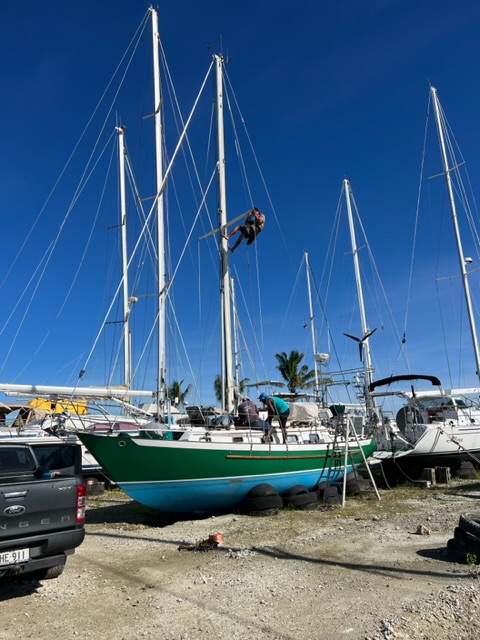

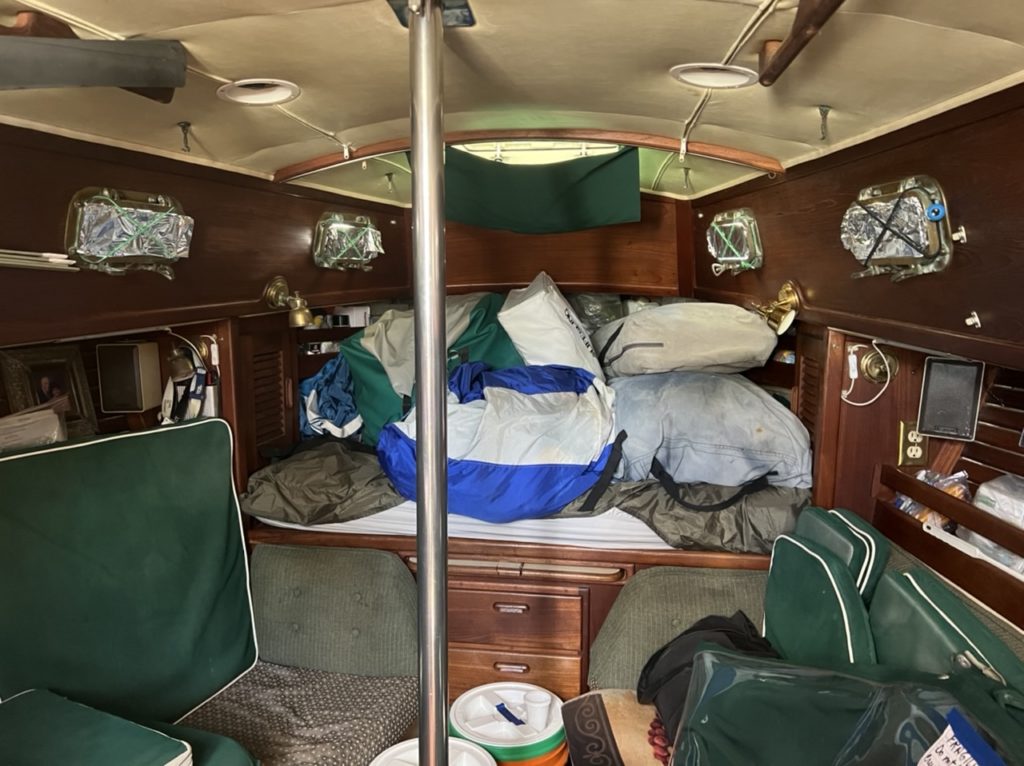
For the first week of our return, Cool Change remained in a “cyclone pit” in a distant section of the boatyard, while Rick and I rented one of the marina’s cottages, a lifesaver. At the beginning of the second week, Cool Change got moved to a maintenance stand so that her bottom could be sanded and a new coat of anti-fouling paint could be applied. Meanwhile, Rick installed a new sump pump for the shower drain, as well as the newest model of our shore charger. We were fortunate that Vuda Marina and the contractors we hired all completed their jobs according to plan in a timely fashion. After two weeks, Cool Change splashed, and then we spent another week at Vuda marina in the water, continuing the recommissioning. After that, we headed over to another marina called Denarau, where our bowsprit/anchor mount reconfiguration had to be completed. It was all quite the lengthy recommissioning process.
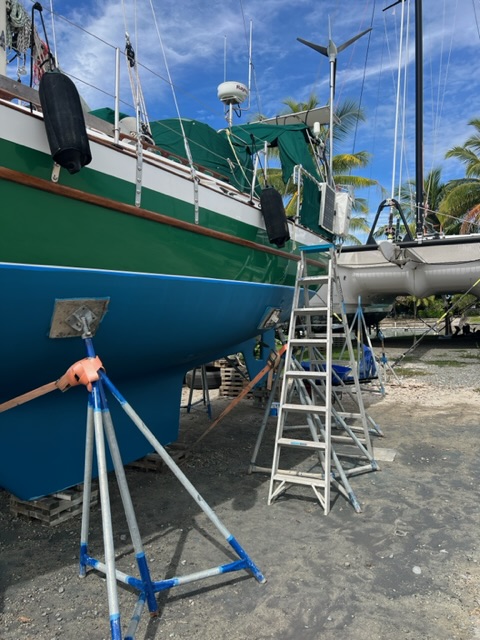

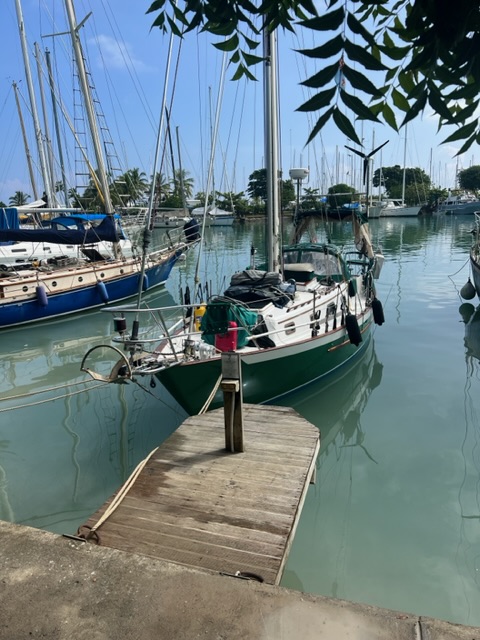
But the thing is, when you are selling a boat, you look at her differently. All of a sudden, little things become big things. Slight dampness at the bottom of a locker becomes a reason for panic until you realize that it is caused by nothing more than a loose hose clamp. A little corner of accumulated dust appears that you never noticed before. And you become hyper conscious of how every little detail looks – should I polish that faucet again? Should we start labeling things so the new owners can find their way around? And interspersed in all of this is confronting the reality of 12 years of accumulated stuff on the boat having to be taken home, stored, given away or thrown out so that the boat doesn’t look cluttered for the prospective buyers. Unlike at home, boats in foreign ports rarely are given the opportunity to shed things, they only accumulate more. Sifting through it all is in itself a full time job.
The good news is that we did have our cute little cottage at Vuda, with a comfy bed, air conditioning and private showers, to come back to each night after a hard day’s work while Cool Change was still on the hard. Our cottage came with a breakfast every morning, served on the cafe patio, where all the regulars hang out every morning. The lovely Boatshed Restaurant, an artistically constructed but massively stable palapa, has daily specials and happy hours that make it affordable. Staying a Vuda Marina is like staying at an intimate but remote RV park with full-season rentals; the staff all know your name, and you know several of the other guests’ names, where they are from and the trials of their boats. There are virtually no other businesses around, so everyone eats and shops and hangs out at the same places every day and evening. It really feels like a family.

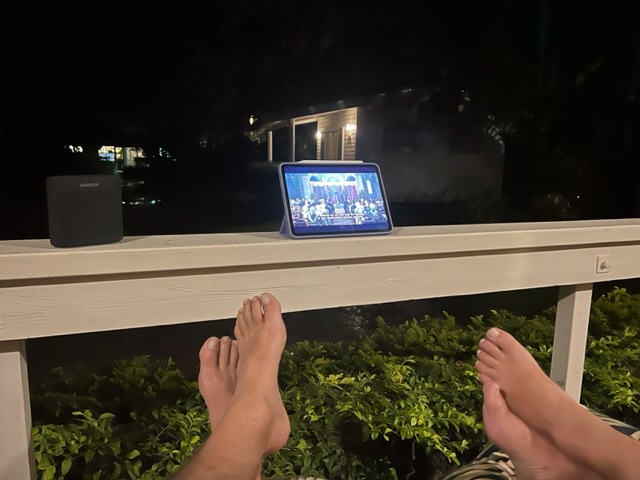
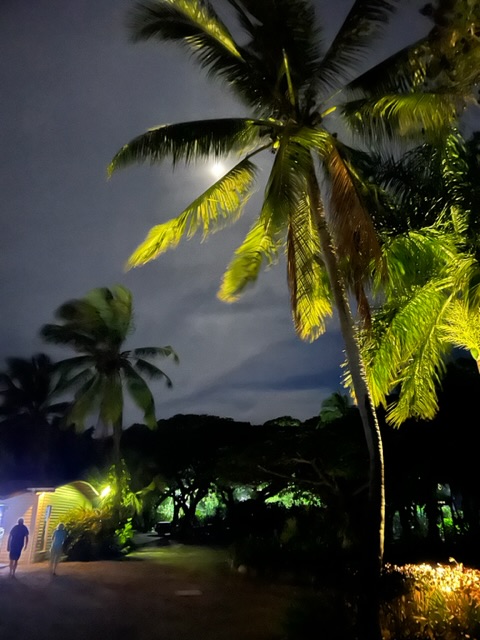
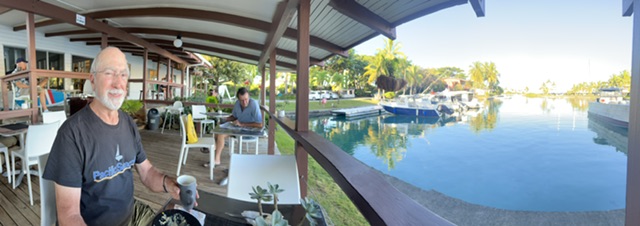
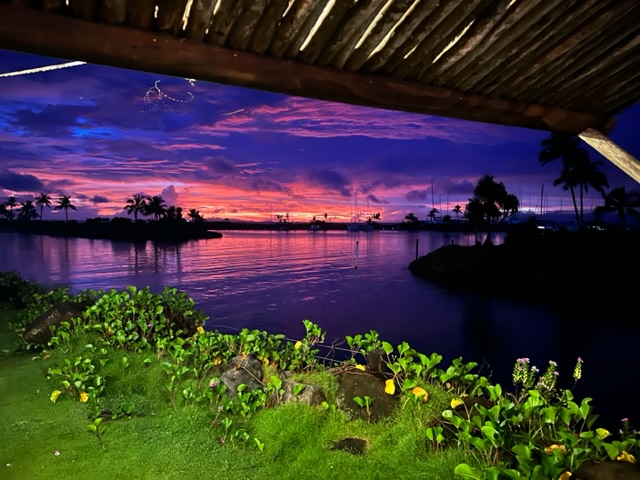
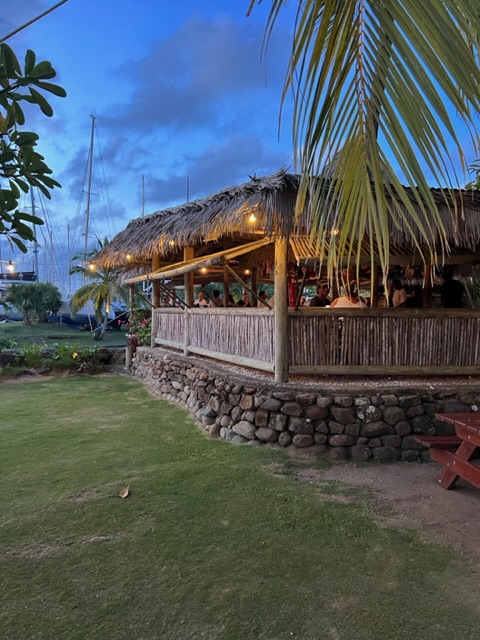
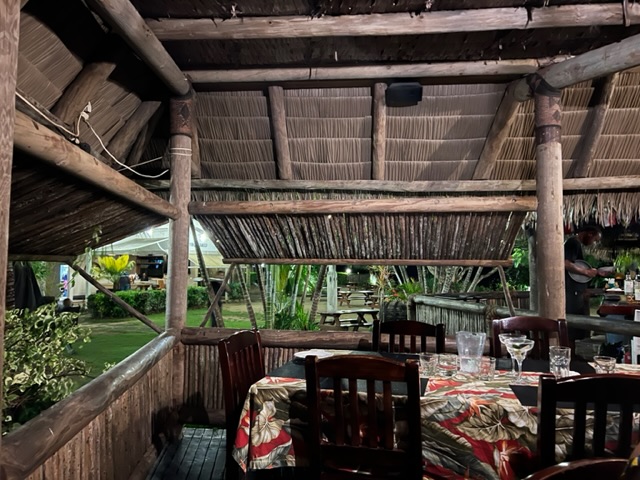


The only things we didn’t like about Vuda were the mosquitos and the boat access from the dock. Perhaps it was the season, but the mosquitos were an irritant. And the access from the dock to the boat is challenging. It is a modified med-moor system, where the stern of the boat is tied to the center of the water basin, and the bow is tied to the perimeter of the basin, with a short little stub of a dock to gingerly step onto from over the bowsprit of Cool Change, timed to coincide with the exact moment that the boat has been hauled closest to the dock. If I were to offer up excuses for why the full time cruising life is made for younger people, getting on and off the dock at Vuda would certainly be one of them.

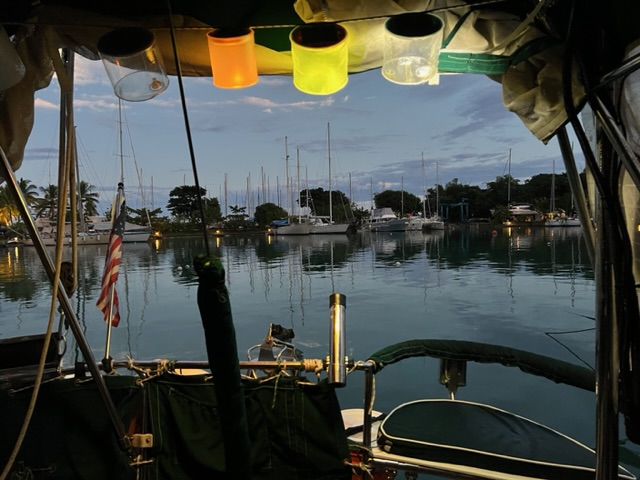
Our next stop at Denarau Marina is a whole different story. Rick describes it as the “Pier 39” of Fiji (in reference to a touristy area in San Francisco). It is not homey like Vuda, but they have excellent laundry facilities, two well-stocked grocery stores, plenty of restaurants to choose from, and customary finger docks that are easy to get on and off of. Big mega-yachts berth there. They have entertainment on the docks sometimes, and there are no mosquitos!
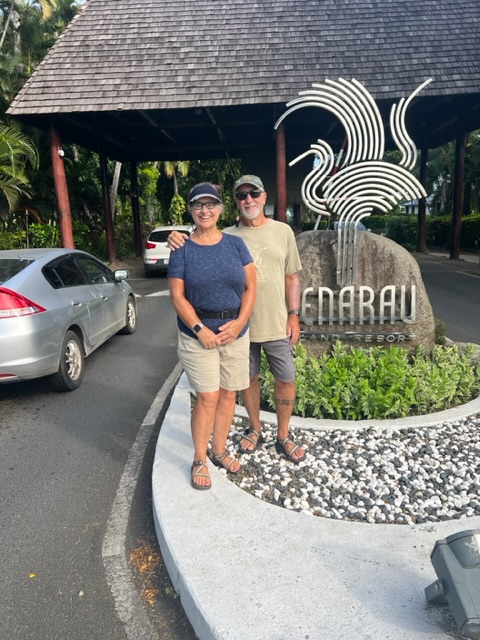


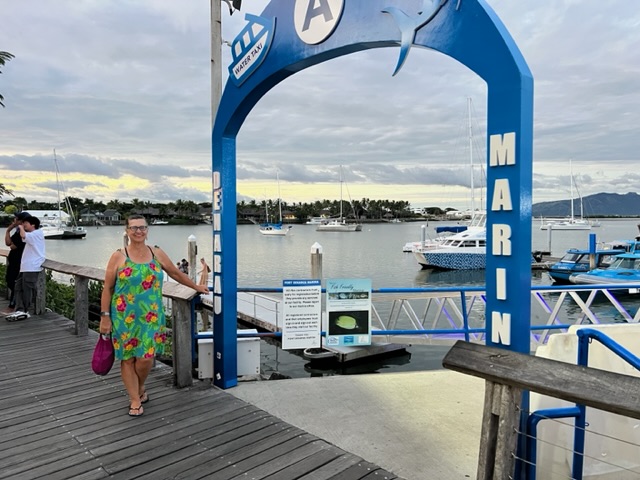

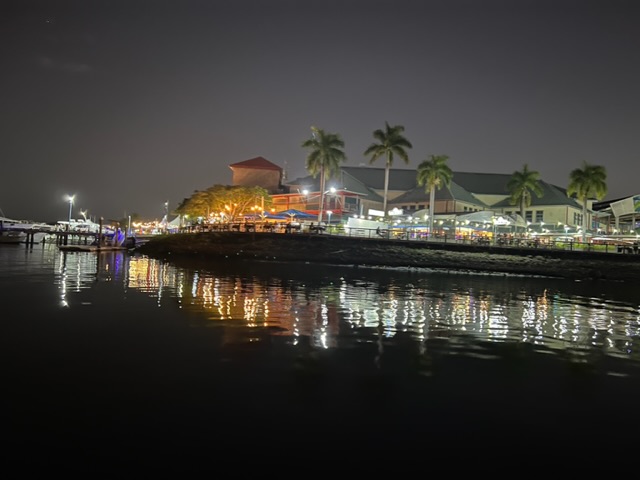
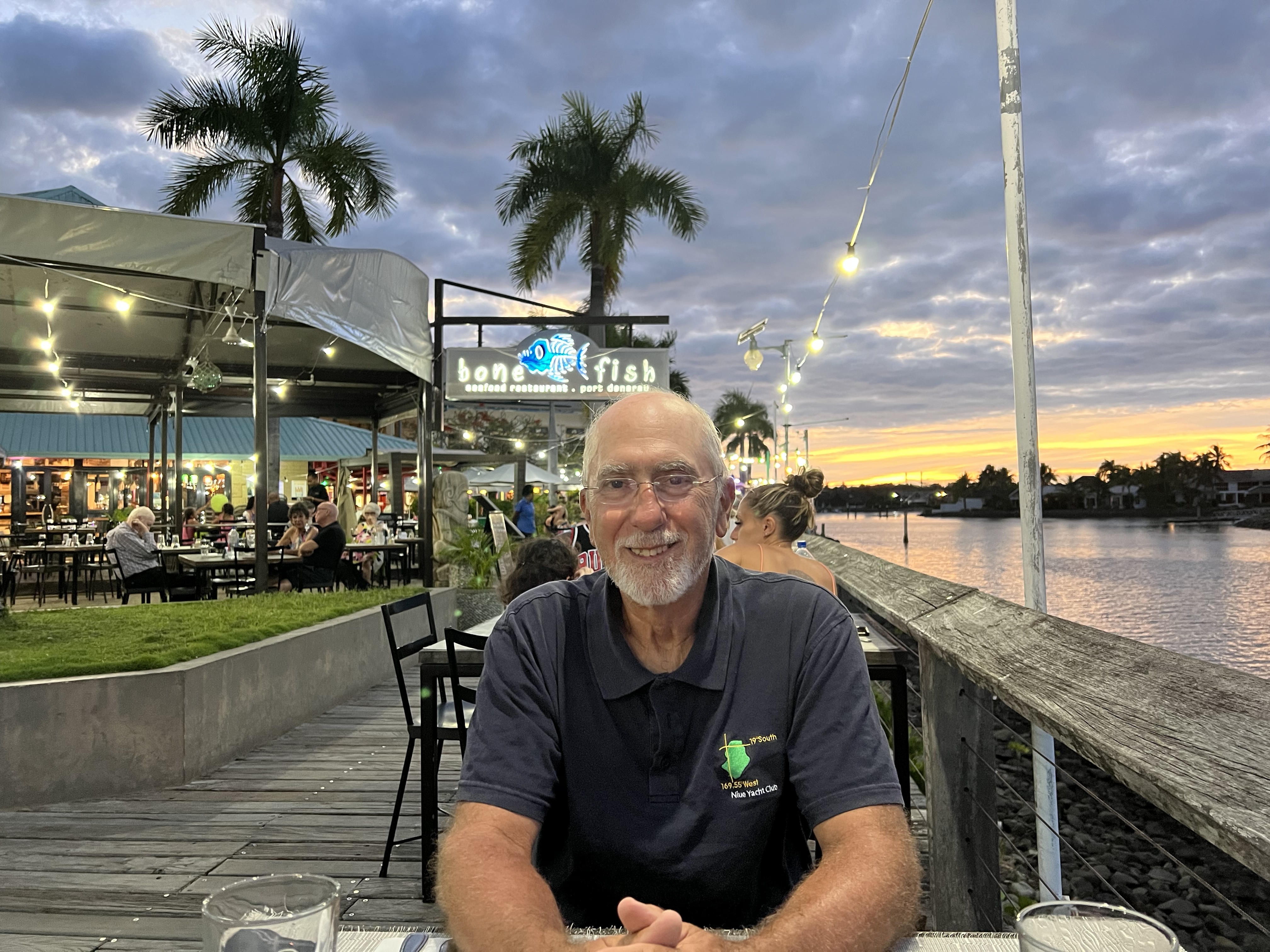
One of the major improvements we made at the very end of last year was to find a machine shop and welding contractor in Fiji able to design and install an ingenious answer to a multi-year problem of our anchor not fitting properly on our bowsprit. They had some final adjustments to make and they only work out of Denarau, so that is why we made the move over there. It took another week to get it absolutely right, but we are delighted with the result:
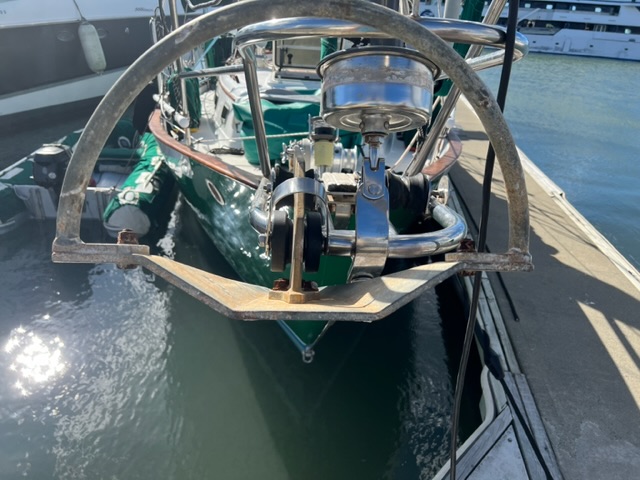
So with the respite of some nice surroundings and breaks from the workload, we somehow soldiered through all the recommissioning tasks and finally got out of the marinas. Deploying full sails for the first time this season on a beam reach in 8 knots of wind or less was for both of us like flying with wings on a cloud; it was heavenly. The wind died down and we almost stopped moving altogether but neither of us wanted to turn on the engine – could we just float like this forever?
Since we arrived at Musket Cove, it has been a little bit more of heaven. I couldn’t wait to immerse myself in their huge saltwater pool, where I float without effort, and focus on relaxing each tight muscle in my shoulders and neck until I practically fall asleep. We have been to the pool every day since. The first night we stopped at the Island Bar for our obligatory welcome drink of their signature frozen mojito. We are taking walks through the coconut groves and on remote beaches. Only as time allows in our relaxed schedule of taking a breather are we squeezing in additional boat projects like cleaning the hull of the growth accumulated in the short time of being in marinas. We intend to go snorkeling and exploring and simply enjoy our last few weeks of being the guardians of Cool Change.
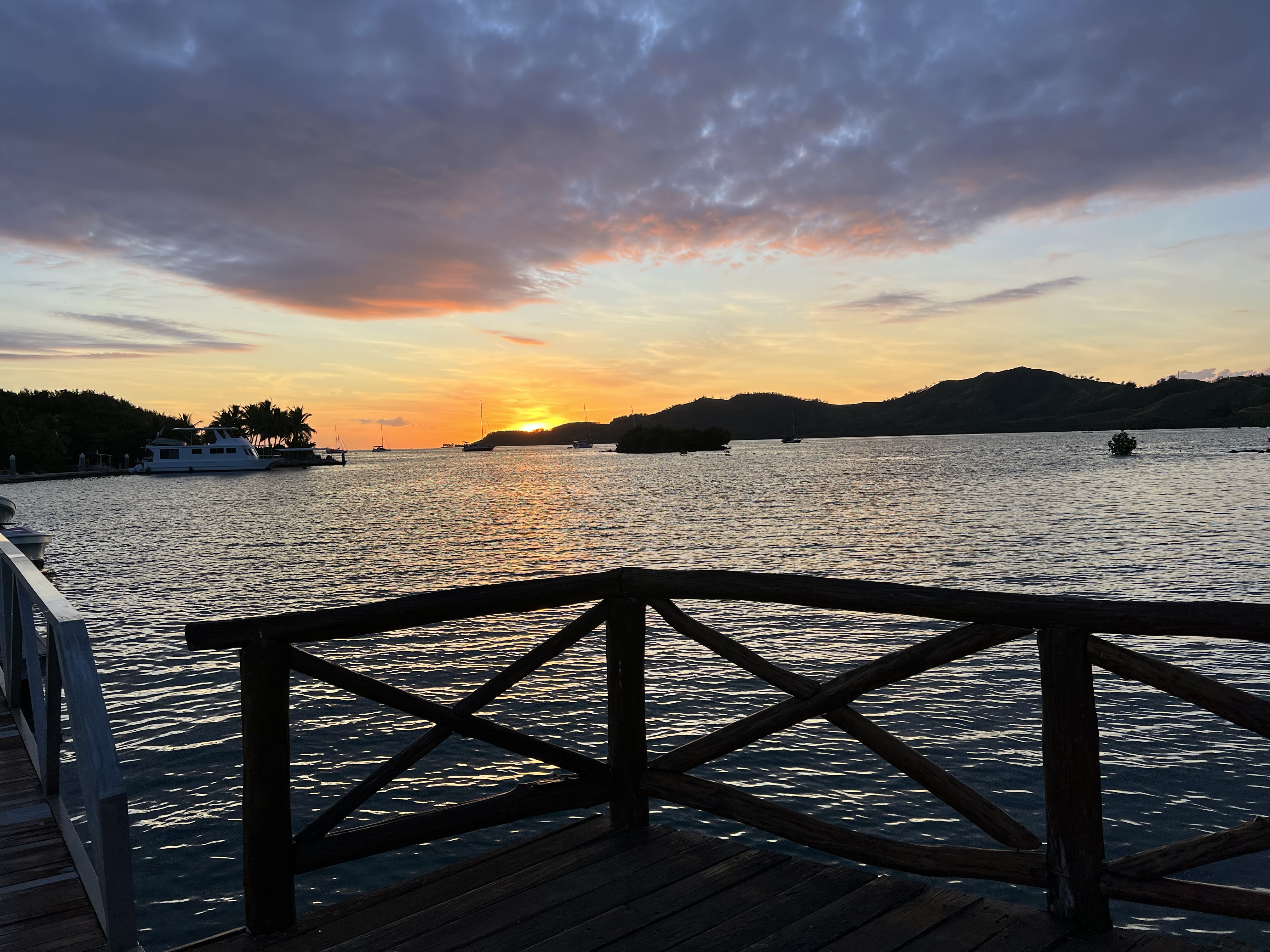


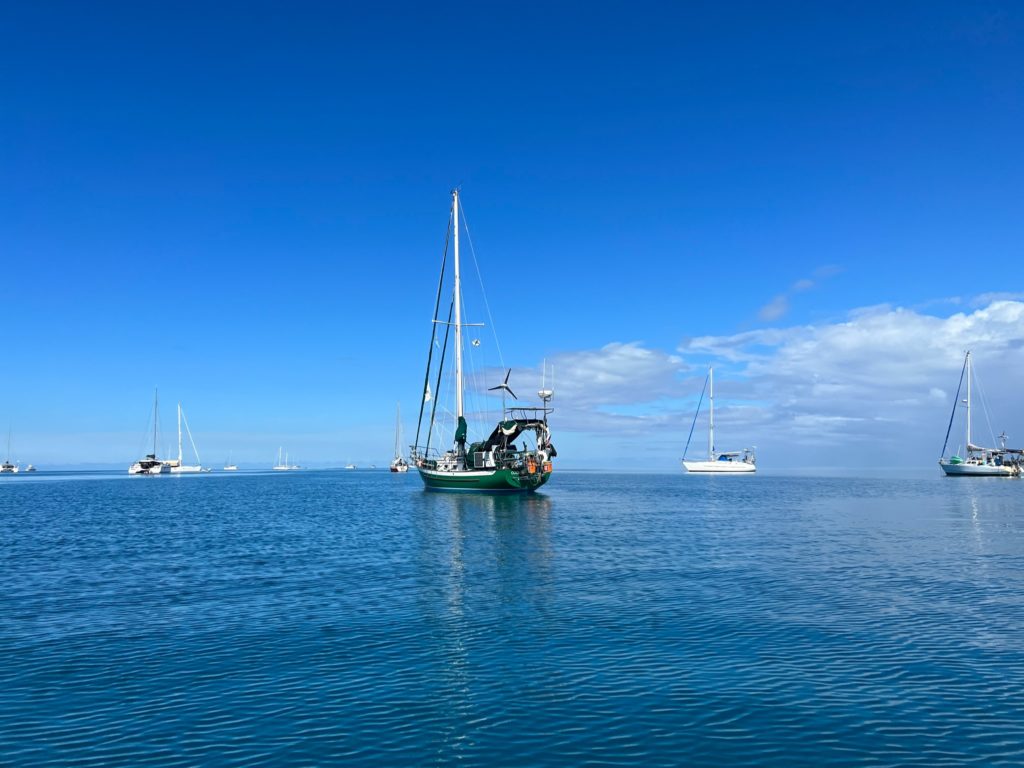
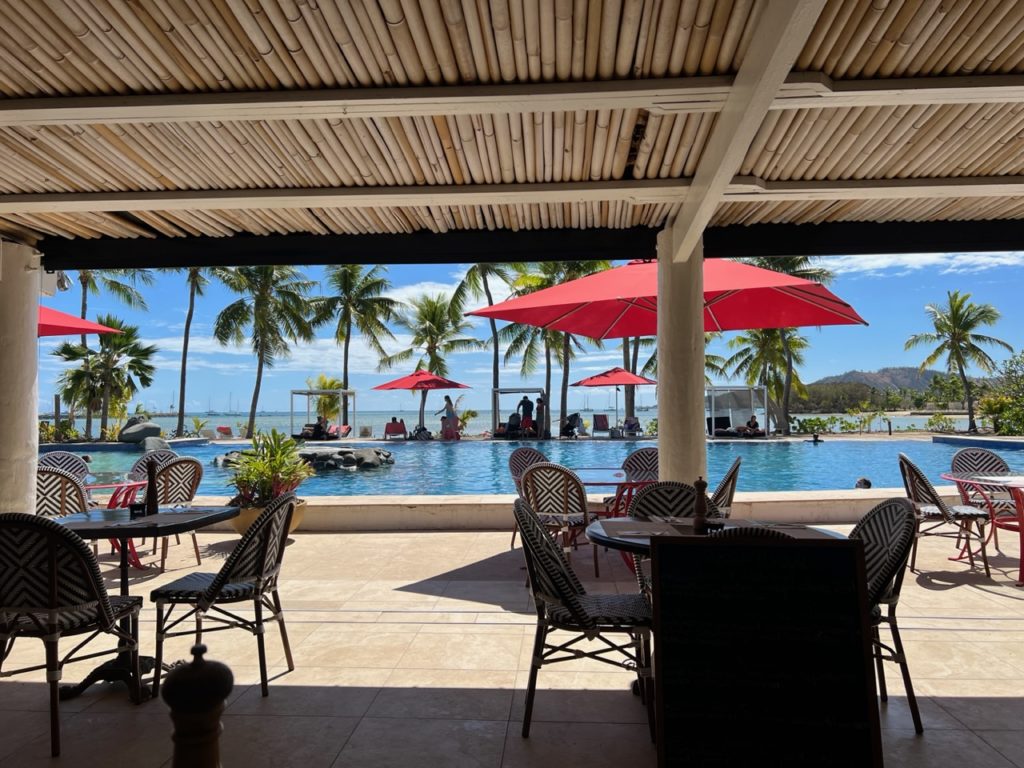
For those who have been following us for our 12 year journey from buying Cool Change, to prepping ourselves and her for ocean passage making, to refining her in Mexico and then sailing the South Pacific, you may wonder, with all our enthusiasm for this great adventure, why are we now selling our beloved Cool Change? There is not just one reason and the answer is more of a feeling than it is an objective explanation. Yes, we are 12 years older than when we started, and I must admit, climbing onto the deck from the dinghy is more of a strain than it used to be, but age is not the whole story. (Although I could make the argument that the bodily changes between ages 59 and 71 are as drastic as the changes from ages 9 to 21, both just 12 years!) We have both developed some health issues over the years that make extended periods away from access to health providers a bit more risky than they used to be, especially while on multi-day crossings, but that is not the whole story either. I could sit here on a mooring ball, and dinghy into shore for a fancy cocktail or a dip in the resort pool, forever, but there is more to full time cruising than that. Diminishing stamina for long passages and diminishing enthusiasm for the challenges of overcoming potentially life-threatening obstacles, whether they come in the form of rough weather or failed boat parts, probably are bigger parts of the story.
But the other reason is, neither of us are one-trick ponies; we have lives beyond sailing. Had it not been for being separated from Cool Change for over two years due to Covid, we most likely would have long since arrived in Australia and sold Cool Change by now, which had been our pre-pandemic plan. But due to the Covid lockdown, we also learned that our home in California had to offer a lot in terms of our retirement goals. Spending more time with relatives, participating more in our adult children’s lives, watching our great nieces and nephews grow up, and making improvements to our neglected home, all brought us great satisfaction during those pandemic years when we were confined to the United States.
That is not to say that we are likely to be content never leaving the house again; we both have too much wanderlust and curiosity for that. We have sailed to some of the most remote areas of the world, true, but can you believe it, we have never been to Europe together? Extended vacations in France, Italy, Spain and especially Greece are beckoning us, while we can still get around ok. Life is short, a fact which becomes ever more threatening as each year passes, and there is still so much to do, so much to see, so much to experience!
Whether another boat is in our future is still to be determined: maybe a French canal boat, maybe a sailboat outfitted for the Pacific Northwest while we visit our kids, or maybe a large sailboat in Mexico that can accommodate visitors for winter season getaways? Who knows. There is no question that we will miss being part of the incredible world cruising community. It is a community whose members have experienced what most people only dream of, yet who can really only share those experiences amongst themselves because no one else can identify. Traveling by private sailboat is so drastically different than traveling by land because you get to go places that you can’t drive to by car, and that tour boats can’t fit into, so your experience is always an intimate, one-on-one experience with the sea, the sky, the land, and the people who live there. It is so much more than just “what was your scariest moment at sea,” which is pretty much the only question we ever get asked by non-sailors. We will miss being an active part of the community of people who have seen the world through the same lens as we have. But for now, all we want is a clean slate to begin drawing out our future plans.
Stay tuned for a month or so from now, when news of Cool Change’s future should become clear!

Good luck to both of you. I love your writing and stories. Totally get all your reasons for making this change to new adventures
Just catching up on your adventure. It is about now you will have that buyer checking out the boat and heading home soon. Safe travels, dear friends.
Thanks David. Yep, we’re home!